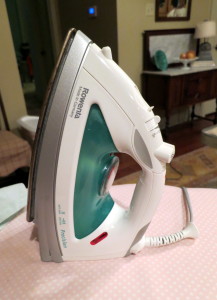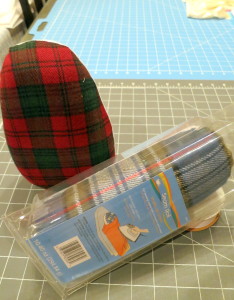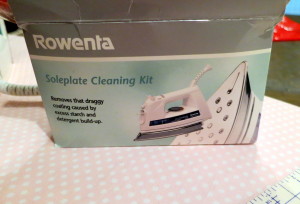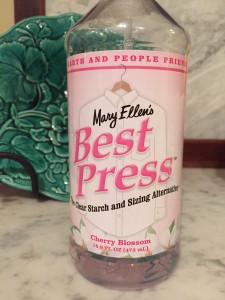
Ironing can be enjoyable, especially if the clothing pieces end up looking great! But to do a good job, you really need a few tips and tools in your arsenal.
As I have shared before, a really good starch is Mary Ellen’s Best Press. I keep a bottle on the ready. Large refill bottles are available, so you never are without.
In addition to a great starch, you also need:
- A great, weighty iron. I like one with an automatic shut off because I get distracted and sometimes forget to turn it off. My iron is a Rowenta and I have been very happy with it.
- A good press cloth. I prefer a piece of silk organza. It keeps the iron off the fabric and helps prevent scorches. I was once told by a dry cleaner that their irons were Teflon and would not burn fabric. If you cook, you know this is not true. Teflon prevents sticking, not burning. I don’t really care for a Teflon coated iron, because it is more difficult to see if the iron is clean.

Organza makes a great pressing cloth. Use pinking sheers to cut the edge in order to prevent fraying. - The ironing board COVER (and what is under it) is very important. The reason that fabrics get shiny and the seam allowance shows through to front is because the loft in the cover and padding has condensed. The loft allows the seam allowances to descend into padding as opposed to ascend into the top layer of fabric.
- A hot iron is a must. I generally go a little hotter than recommended, but that means I have to keep the iron moving.
- A sleeve ironing board is a tool I use often in the last few years. However, 10 years ago I wouldn’t have had a need. It helps when ironing sleeves because you can iron around the sleeve without creasing. It also allows you to iron the seams of a sleeve when sewing.
- An ironing ham and seam roll are also great for ironing curved seams, like a princess seam or sleeve seam. You can make or buy these. The pre made ones are normally plaid on one side. The ironing ham or tailor’s ham is shaped like a ham or can of Spam. The seam roll or seam ham is shaped like a submarine sandwich.

Ironing ham and seam roll are great to prevent creases on curved seams. - A wooden tailor’s clapper or ironing clapper is a block of would that you press over an area you have just ironed. It holds in the heat and or steam creating a flat crisp seam. It is good for getting out persistent wrinkles.

Wooden tailor’s clapper is great for really setting a seam or getting out a tough wrinkle. - A wooden tailor’s board provides angles, points, and curved areas which can be used to iron tricky areas like collar points, etc.

A tailor’s board provides all sorts of angles and points for perfect pressing. This one rests on a homemade ironing pad. - Iron cleaner, I like Faultless Hot Iron Cleaner or the same thing in Rowenta brand. It comes with a cream that you iron over with a hot iron. It does get all the build up of the sole plate of the iron.

In order to keep fabrics clean, you must keep your iron clean. - An ironing pad allows you to iron larger pieces without having to move them around. I made mine to match my sewing room. You can take it when you travel (I like to have my own with me, so I am not dealing with dirty ironing board covers) or when you are on a sewing retreat.
- If you are ironing a large piece of fabric (like a tablecloth or getting fabric prepared to cut), you need to pay attention to how the fabric is falling off your ironing board. Freshly ironed cloth, that then crumples up when it hits the ground undoes all your hard work. Instead, guide the fabric to the ground and make it rest on itself, accordion style. I sometimes iron with a large table behind my ironing board, so that ironed fabric can rest on the table instead of the floor.
- Of course, last but not least, is Mary Ellen’s Best Press. You have got to try this stuff!

Mary Ellen’s Best Press
My mom always complained about ironing, but I have never really minded it. I watch TV, use the proper tools, and hope for the best! Like everything in life…practice makes perfect!

This is awesome! I love the iron and the new ironing board, but do they make one that does not break toes. I have a few of those. I use to keep my iron in a closet on a high shelf. So you can get the iron and ironing board also. Thanks for your information.
Watch out for your toes!